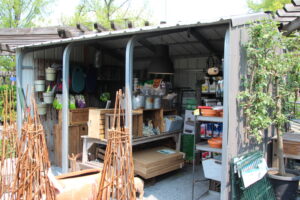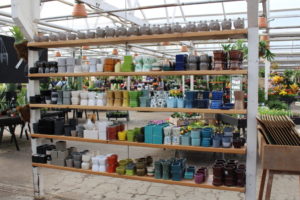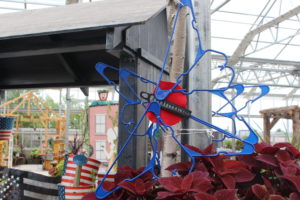You Can’t Grow Your Business by Cutting Costs
By continuing to manage our costs and aggressively communicating the power of flowers and plants, we have a real opportunity to set the stage for sustainable growth.
It’s been a tough couple of years for our industry, with the double whammy of a poor economy/curtailed consumer spending and weather that hasn’t worked in our favor, especially during the peak spring selling periods. And the economy isn’t forecasted to pick up significantly for a while. Consumer spending is projected to stay weak, at least through the first half of 2011 and probably longer than that.
Driven by continued high unemployment, a lackluster housing market and the high rate of foreclosures, consumer confidence remains low, with consumers still very concerned about their financial stability and future. The weak housing market and low home prices are a real concern for Baby Boomers, who had most of their net worth tied up in their homes. And our prime Boomer purchasers are getting nervous about their retirement futures, fearing they won’t have enough saved to fund their golden years or that their pensions and Social Security won’t be there or as valuable as originally predicted. Until consumers feel positive about their financial futures, they’ll continue to hold on to their dollars.
In response to these concerns, all consumers, especially the Boomers, believe they need to take individual action, that they can’t rely on government or their companies to come through for them. They’re saving more and both paying down outstanding credit card debt and cutting back on their pending. Additionally, the X/Y/Millennial generations are telling themselves that they never want to be in the same position as the Boomers when looking at their own retirement, and are becoming much more fiscally conservative.
While we needed a societal correction to the go-go spending trends that we’ve experienced over the past few decades, people are now trending to spending within their income means. These consumer changes take significant discretionary spending dollars, money previously spent on deferrable and discretionary purchases like our products, off the table.
The Bad News First
Currently, small business owners in every industry are very pessimistic. Findings from a September 2010 Small Business Watch confidence index by Discover Card reflected an index of 73.8, the second lowest rating in history (and this after the Recession was declared officially over!). The traditionally optimistic National Federation of Independent Businesses (NFIB) most recent optimism index measuring expectations about their financial future shows that they’ve been pessimistic for almost three years, an unprecedented persistence of gloominess. During the last “major” recession in 1981-82, the NFIB optimism index dropped below 90 for only a single quarter and then rocketed to new and sustained heights. In comparison, the index has been above 90 in only four of the past 28 months. If optimism triggers the self-fulfilling prophecy of economic growth, uncertainty kills optimism, and small business owners are definitely suffering from the paranoia of unusual uncertainty right now. It’s hard to have confidence that the future will be good if you have no idea what the future will look like!
In a period of uncertainty and economic challenge, it’s human nature to hunker down and try to control those elements of your business that you have control over costs and expenditures. In addition to the actual dollars saved through cost cutting, this focus helps maintain the variable cost/sales ratios that help to offset the less controllable fixed cost/sales ratios, thus helping to maintain some semblance of profit management. And this focus on cost control/containment has been laser-like across companies of every size and in every industry in the past year, which is why some companies with flat and declining sales have announced increased profits.
While it hasn’t been easy, our industry has done a remarkable job in cutting expenses, increasing productivity, focusing on cash flow and controlling inventory in order to survive decreased consumer spending. Though difficult, retailers and producers have done a pretty good job of playing the lousy hand they’ve been dealt. But where do we go from here, especially if the fortune cookies and tea leaves are correct? Will we continue to see high unemployment, a shaky (at best) housing market, and a consumer who is concerned about their financial future and is spending less?
Keep In Mind
Here are a few thoughts to consider as you fine-tune your plans for 2011:
A) At some point, you’ll reach a point of diminishing returns with your cost cutting/containment efforts. Many of the savings achieved over the past few years have been in areas that were invisible to your customers, and didn’t affect their buying experience, your customer service and brand image. But continued cost cutting could start becoming evident to your customers that could have a negative effect on sales, something that you have to be very conscious of.
B) It’s a mathematical reality that higher sales have more impact on profitability than reducing costs; higher sales positively impacts both variable and fixed cost ratios, leveraging margins.
C) While we’ve been operating largely with an operational and price-value mind-set in the past two years, we tend to forget the positives that our products provide to the consumer, things that can help convince her about the real value of the plants and flowers our products provide. Our products can help improve our customers’ quality of life, an attribute that most other industries’ products can’t say.
Granted, the new consumer mind-set is more focused on price value, but we’re starting to see evidence that products, even higher end luxury items, are starting to show sales increases because they provide personal benefit to the consumer. We’ve also seen that most consumers don’t intuitively see these benefits, they need to be reminded and convinced of them, meaning our marketing message has to go beyond price and communicate our lifestyle and personal benefits.
Yes, retailing for the foreseeable future will be tough; some say even tougher than during the Recession because what the future looks like for both businesses and consumers still remains cloudy. And yes, we’ll need to continue to focus on cost containment as a means of becoming more productive and efficient, and allowing us to better control our bottom lines.
But consumers continue to spend! Our challenge is to demonstrate to them the real value of what our products can do to enhance their lives and lifestyles, how they can lead to a higher quality of life. Now is the time when we need to give as much emphasis to growing sales as we’ve given to cutting costs.
Am I pessimistic about the years to come for our industry? By no means. I’m cautiously optimistic! By continuing to manage our costs and aggressively communicating the power of flowers and plants, we have a real opportunity to set the stage for real, sustainable growth…


















 Videos
Videos





